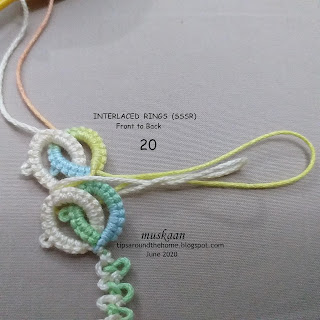Grace
tagged me on facebook to share 7 of my favourite books. Really? ONLY 7?! With 5
decades of reading and a personal library of close to a 1000 books, How can I choose just 7 - you can relate
to this feeling, right!
But
I took this as an opportunity to start a new album and share the books that are
in my home. It is taking me through some nostalgic moments. I invite you to
share my journey .... No promises, but I’ll try to do one post per week on my book
collection.
Under
the tag "books
I read", you can find my old posts & pics about a few books, most
with a tatted bookmark. I'll try not to repeat them, if possible.
Back
in the ‘80s, with my very first paycheck, I ended up in a bookstore. This
became a monthly habit. My checklist included classics, complete works
preferably in hard cover/binding.
The
Complete Works of Oscar Wilde was among the very first of such buys.
Oscar
Wilde has such a wonderful way of presenting stories laced with humour and
satire, whimsy characters, and witty epigrams. But reading his plays back to
back revealed that he often repeated them! I penned a few thoughts
on back-to-back reading here
I
wonder if these plays will impart the same pleasure now - age and experience or
time has a way of changing one’s preferences, one’s perspective…
The Picture of Dorian Gray remains one of my
favourite novel for the message it imparts.
I’ve
read all his short stories, a few of
his sonnets, ballad, and De Profundis. The latter revealed a sad
and weak side of the sensitive author. He was also born in the wrong era.
I didn’t get around to reading most of his essays, and a lot of his poems, etc.
Though
huge (almost 2 inches thick!) and hard cover, it is surprisingly lightweight!
But the print is too small to read comfortably now - this is where e-readers score over print. Nevertheless, it sits
proudly and worth every penny.
()()()()
The Complete Sherlock Holmes
Sir
Arthur Conan Doyle
This
is a box set of 2 volumes, and I have All 4 novels and all 56 stories, back to
back or more literally, cover to cover!!! (the marks of reading are visible on the spine and covers ;-P) Just could not put
it down. I consider this character the best sleuth among all I’ve read, and
Doyle’s suspense consistently the best. He generally has very few characters,
and spins the mystery around those handful….unlike Agatha Christie who collects
oh so many characters in every single story.
One
peeve, though, is that the complete picture is not painted and a vital clue is
mentioned towards the end, thus preventing the reader from participating. But
the story still holds one’s attention to the very end.
I
liked the TV series where Jeremy Brett plays Holmes – a bit over the top, but
like I said, the stories are so compelling ….
This
box set is actually my 2nd or replacement buy. I had lent my
original collection (a leather-bound complete works) to a friend and it never
came back!
So what are your thoughts?


















































